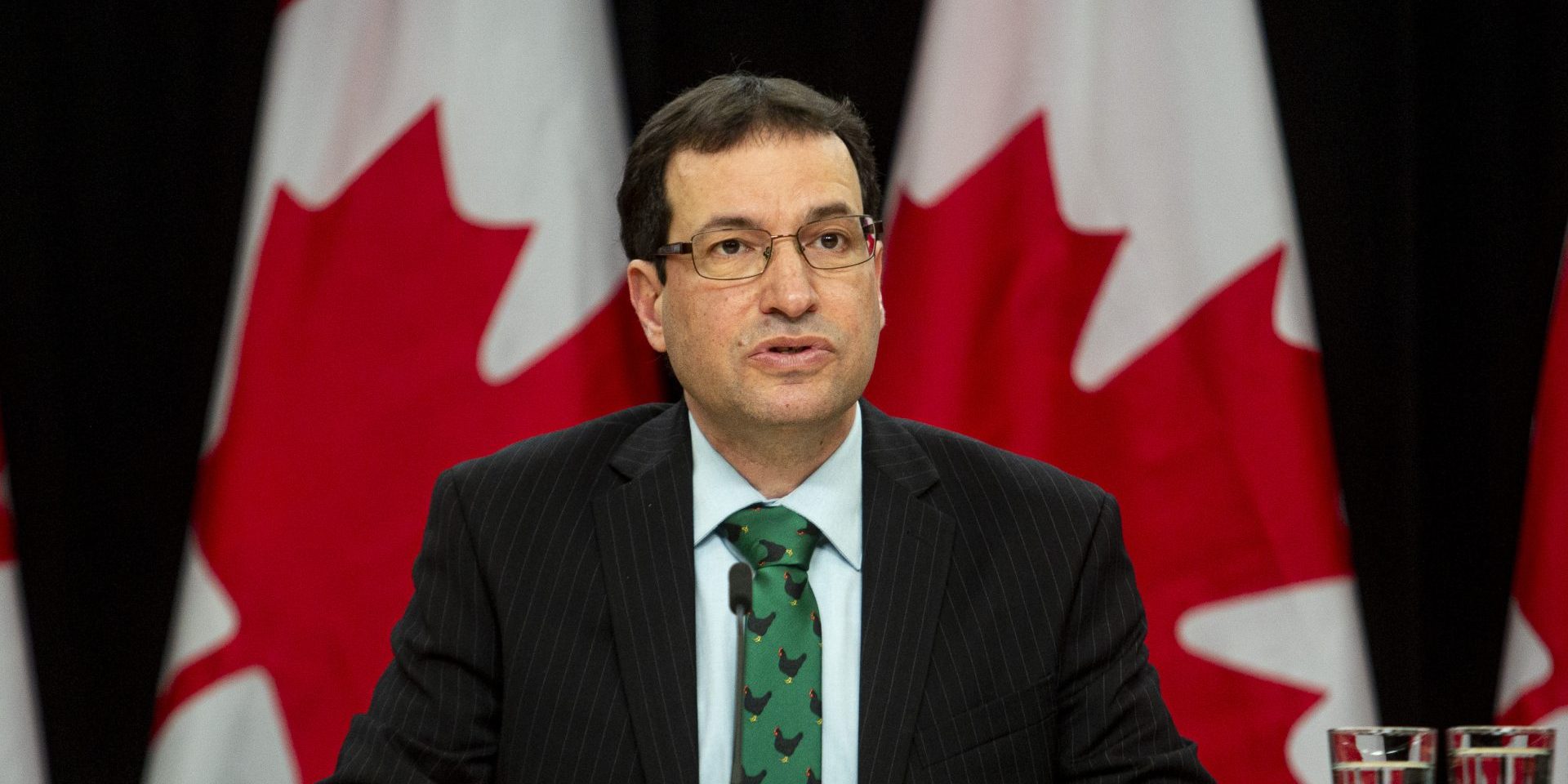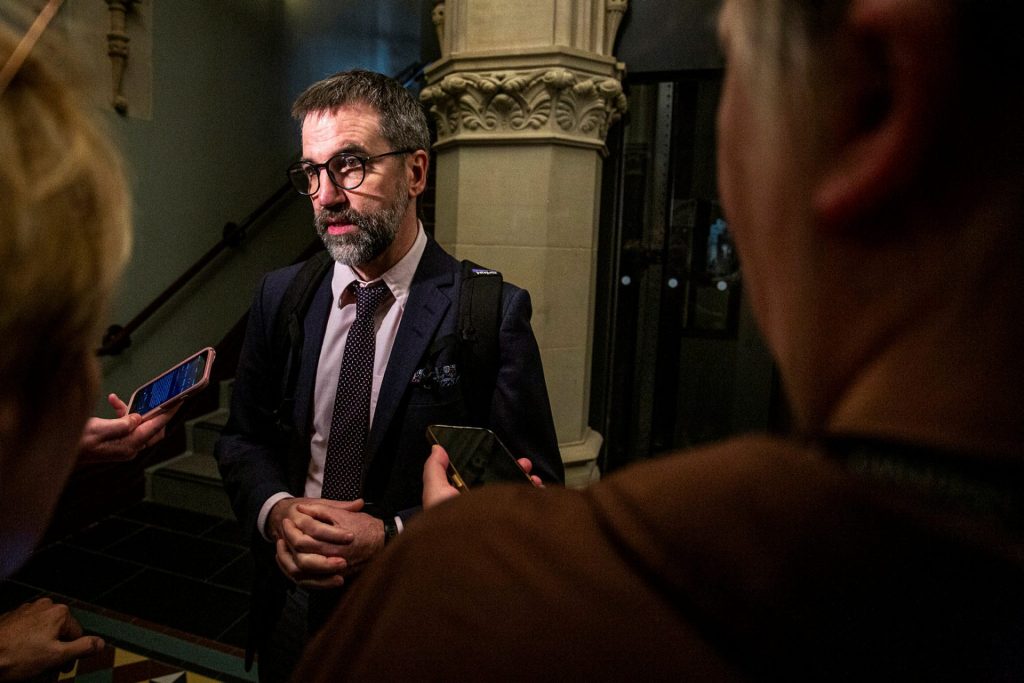Ottawa’s climate adaptation plans ‘incomplete,’ and ‘neither systematic nor comprehensive,’ says Environment Commissioner DeMarco

The environment commissioner’s report on Canada’s National Adaptation Strategy finds that while the two-year-old plan marks an “important first step,” the government has not done enough to advance climate adaptation measures, nor do the plans “prioritize Canada’s climate change risks.”
The report, released June 10, found that “although it is early days for implementation,” two of the strategy’s three “key” components have not yet been implemented. The Liberals launched the strategy in June 2023 to act as the government’s “blueprint” for plans to adapt to the impacts of climate change—making it one of the last nations in the Organisation for Economic Co-operation and Development to develop one.
“We found weaknesses in the strategy’s design and implementation,” Jerry DeMarco, commissioner of the environment and sustainable development, told reporters in a press conference shortly after his office tabled four reports in the House of Commons. “Essential elements needed to make it effective, such as a prioritization of Canada’s climate change risks, were missing,” he said.
The National Adaptation Strategy targets a number of areas. It includes plans to improve and build up infrastructure to be better equipped to weather natural disasters, address the physical and mental well-being of those impacted by climate change, protect and restore nature, and identify collaborative priorities between Indigenous leaders and provincial governments.
“Given the scale of the challenge, engagement from all levels of government and civil society as well as the private sector and all Canadians is critical to Canada’s ultimate success in adapting to climate change,” reads the report, which notes the federal government’s role as a leader to ensure actions are “co-ordinated, effective, and efficient.”
The report highlights that the government failed to implement two of the strategy’s three components: the “Federal, Provincial and Territorial Bilateral Action Plans,” and the “Indigenous Climate Leadership Agenda.”
The former included logistics for provincial and territorial bilateral plans, and to ensure “continued” communication between federal and provincial governments to work collaboratively on adapting to the impacts of climate change. The latter promised a “pathway to support self-determined action to address Indigenous Peoples’ climate priorities” by establishing a line of communication between Ottawa and Indigenous leaders to work collectively to implement the goals outlined in the strategy.
But the report also found the strategy’s only implemented component—the Government of Canada Adaptation Plan, which includes 73 federal actions tied to 22 departments and agencies—was “incomplete and inconsistent.”
This component covers Ottawa’s contributions to the strategy, and was intended to act as a complementary plan to “the adaptation work and strategies of provinces, territories and Indigenous partners,” but it was found to have “gaps” by the commissioner, who tabled his report alongside Auditor General Karen Hogan on June 10, the report calling the plan “neither systematic nor comprehensive.”

The plan was launched under then-prime minister Justin Trudeau and then-minister of environment and climate change Steven Guilbeault (Laurier—Sainte-Marie, Que.). Since coming into power in 2015, the Liberals have invested more than $6.6-billion in climate adaptation–related efforts.
Of that, $1.6-billion went to implement this strategy, a pricetag that doesn’t include response or emergency spending, which has only grown in recent years, as extreme weather events, such as the wildfires currently ravaging the Prairies, become an increasingly common seasonal feature Canada has to contend with.
According to the Insurance Bureau of Canada (IBC), last year’s summer was the “most destructive season in Canadian history” for insured losses, costing over $7.7-billion in insured losses across the country.
IBC welcomed the audit, saying it clearly indicates that “despite years of focus on emissions reduction, the federal government has underperformed on commitments to protect Canadians from the wildfires, floods, windstorms and hailstorms affecting hundreds of thousands of Canadians today. As we’ve seen in recent weeks, wildfires have once again forced thousands of Canadians to flee their homes—a powerful signal that urgent action is needed to shield communities from worsening weather events.”
Recent wildfires have displaced thousands, prompting an emergency debate in the House of Commons last week.
Environment and Climate Change Canada (ECCC) has estimated that investment in proactive adaptation measures, in the long-term, will save the public money—the department estimates savings of between $13 and $15 for every dollar invested in adaptation measures.
The report also found that only 17 federal programs were required to submit annual reports on their progress, yet none were connected to the National Adaptation Strategy’s “objectives, targets, and indicators,” pointing to a lack of communication and direction from the top down, starting at Environment Canada.
This issue extended to regular reporting on progress. The commissioner’s report called the government’s plan lacking in a “whole-of-society reporting framework,” making it difficult to get an accurate picture on what actions were effective.
The audit also found issue with the methodology, finding that the 73 actions targeted a mix of new and existing federal programming, instead of presenting a “systematic and comprehensive plan.” The report concluded that instructions given to departments were unclear and unfocused, writing that ECCC “did not provide clear guidance” to departments jointly responsible for leading the plan.
This confusion led to “inconsistency,” the report said. The audit also highlighted that the plan failed to “prioritize” actions that benefit communities disproportionately impacted by the effects of climate change, such as older people, those living alone, and some Indigenous communities, as Environment and Climate Change Canada did not “assess the anticipated equity outcomes” to inform their priorities.
The report assessed seven of the government’s 73 actions, and found that the implementation in those areas was “limited.”
“The adaptation Action Plan, which is meant to be the centrepiece of the national strategy, was not comprehensive,” DeMarco said at the press conference. “The plan includes 73 actions, and we found that implementation was limited for the seven actions that we assessed.”
One issue with the seven actions assessed was a lack of “value-for-money” consideration in spending decisions, the report found, which the commissioner highlighted leads to issues when it comes to transparency about the spending of public funds, as it is difficult to conclude how the spending contributed to results.
Canada is not the only country to have such a strategy. Germany, France, the United Kingdom, and Japan all have National Adaptation Plans (NAPs) that outline each country’s adaptation plans in response to climate change. France’s first NAP was released in 2006, 17 years before Canada’s, despite the Environment and Sustainable Development commissioner recommending Canada develop one that same year.
Canada’s own National Adaptation Strategy came after a 2016 ratification of the Paris Agreement specified within the document the need for countries to develop a NAP. Four years later, Ottawa committed to creating its first such strategy, beginning that work in January 2021, and releasing it two years later after a consultation and comment period.
ewand@hilltimes.com
The Hill Times






 LICENSING
LICENSING PODCAST
PODCAST ALERTS
ALERTS













